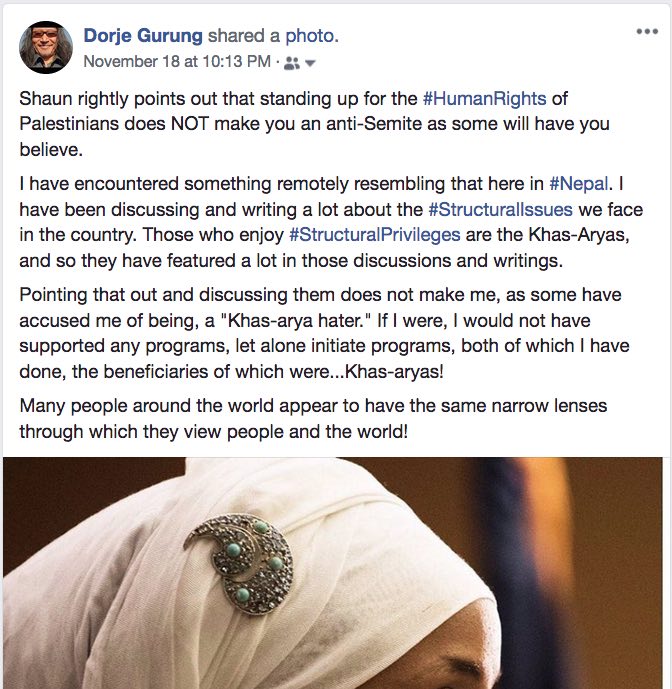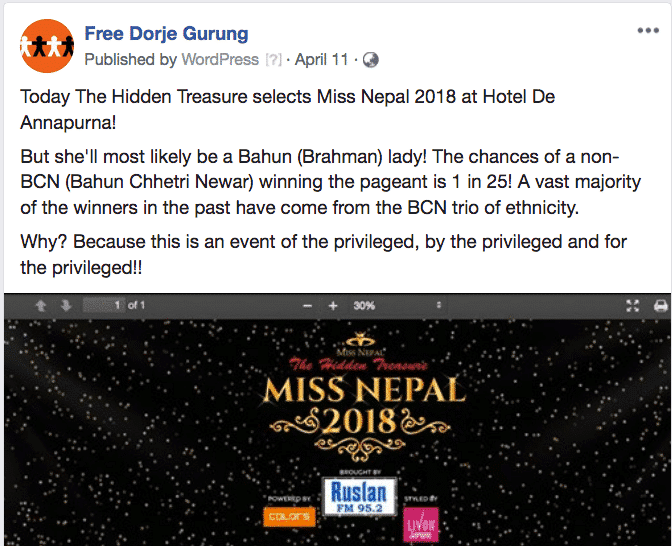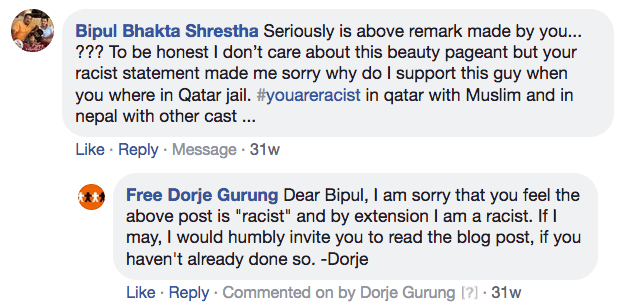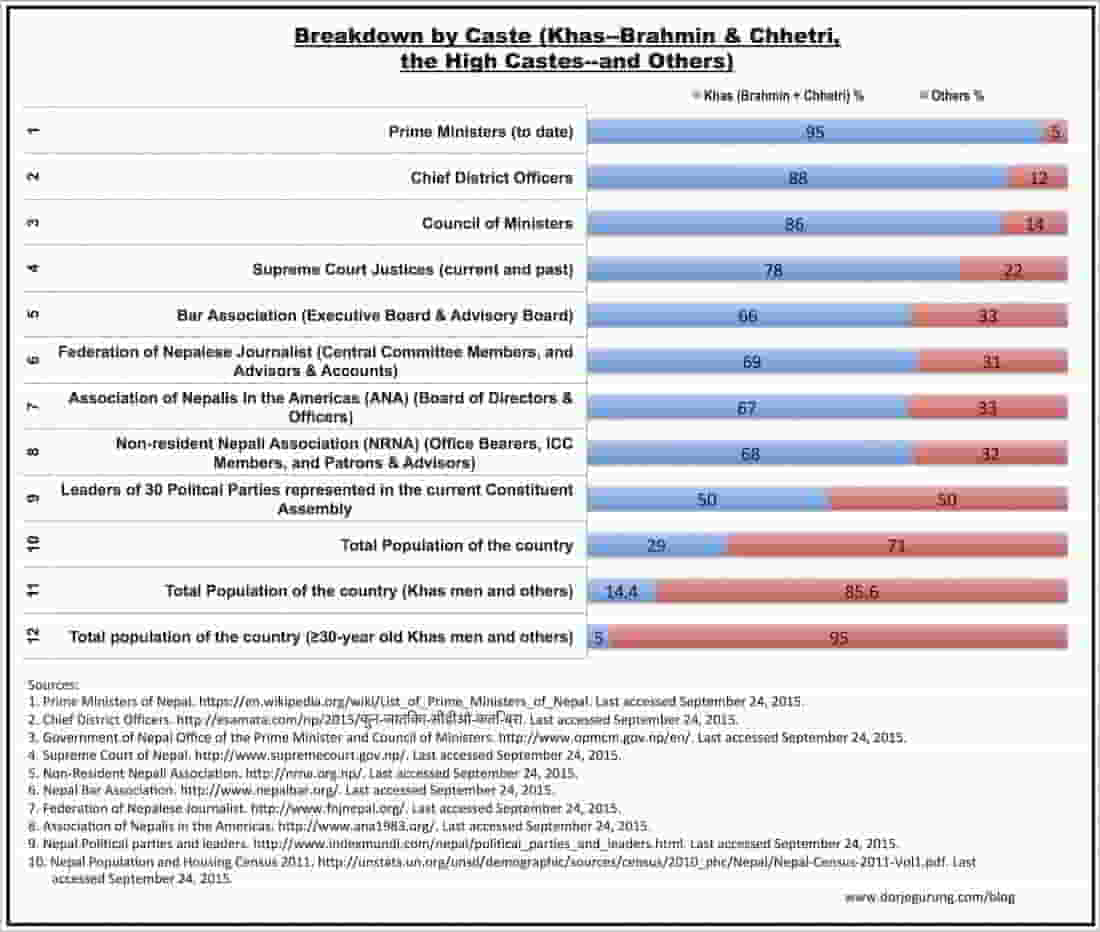
In the above Facebook post Shaun King says:
First off, it’s going to be great to have @ilhanmn in Congress. Secondly, and I should’ve seen this coming, since she is not only the first Muslim woman elected to Congress, but also a Somali immigrant, I should’ve known that she would be a target. She’s a woman. A Black woman. A Black immigrant woman. A Black immigrant Muslim woman….in power, during a time where all of those communities are under attack. But to see her attacked by “moderate” Jewish groups for supporting the human rights of Palestinians has been disappointing to say the least. I must say this again and again but standing up for the human rights and dignity of Palestinians does not make any of us anti-Semitic. I know Ilhan. She speaks out against anti-Semitism. We have to do better. I need the @adl_national to do better on this. Ilhan is an ally. #istandwithilhan
On Nov. 18, I shared the above post with the following commentary:

After making that status update, I realized I needed to blog about it providing the details.
To begin with, it’s ridiculous that I am having to even state something as obvious as that! Taking issue with and writing and talking about structural issues the country suffers from are NOT a sign or expression or because of hatred for the Khas-Aryas!
Khas or Khas-Aryas, Brahmins and Chhetris — the hill so-called high caste Hindus — are the structurally privileged group in Nepal. (If interested in what privilege in the country looks like, read What is Privilege in Nepal?) They are disproportionately represented in many of the political, social, and economic structures, for example. They are on average wealthier, more educated than other groups as well, of course.
I have written a lot abut them. Click here to read about how the secretariat, Singha Durbar, is mostly staffed by them. Click here to read the shredding of an argument saying that there is no institutional and systemic discrimination of the lower castes in the country. Click here to, firstly, read about the disproportionate representation of the high caste Hindus in the three pillars of the government as well as in other important and powerful bodies, such as the Bar Association, and, secondly, about the benefits of those bodies being diverse, more representative of the population. Click here to read about how, blinded by their privilege, some Khas-Aryas in positions of power hold very biased and misguided views about non-Khas-Aryas. Click here to read a section from the book Unleashing Nepal describing how the hill so-called high castes benefited immensely from the land-grant program begun by the first Shah King of the country. The program essentially ensured that they and their posterity remained very wealthy and powerful. Wealth and power go together, of course!
The discriminatory law written by the high castes also helped greatly. It divides the people up into different castes, relegating everyone else below the high castes themselves. Of course, it’s a logically flawed social system.
I have also written about how structural inequality has ensured minimal female representation in the power structures. To shed light on these issues (and others) and to raise awareness, I have gone around schools in Nepal and traveling around the world making presentations on some of those topics. School curriculum does not appear to teach anything about the caste system.
Apart from hating Khas-Aryas, I have been accused of doing other things too. In this blog post I reproduce some of the Facebook reactions to the following chart, some of which include similar accusations.
Blinding Effect of Structural Privilege reproduces the exchanges I had with Facebook users about structural issues the country faces. Apart from some displaying a blindness to their privilege, one user indirectly accuses me of “inciting inter-caste hatred!”
I have also been accused of being a “racist” both in person and on social media for again doing the same thing — writing and discussing structural issues. One of the most ridiculous one was by a user on a Facebook Page I manage. I shared a link to a blog post about a beauty pageant, in which I argue, with evidence, that it essentially appears to be by and for the privileged.
Here’s the status update to begin with.

And here’s the comment. (Incidentally, I have NOT bothered to redact the name of the user because this is a public post.)

If I were devoting so much time and effort into raising awareness about our structural issues BECAUSE I hated the Khas-Arywas, of course I would have avoided doing anything which actually provides educational opportunities to — and attempts to improve the lives of — poor and struggling Khas-Aryas.
I wouldn’t have for instance raised money to support the education — at the UWC in Holland — of a Brahmin girl from a family who couldn’t afford the expenses. I wouldn’t have been involved in raising funds to support the education of five children of a Chhetri family in Baglung. I wouldn’t have agreed to raise funds for UWC scholars from poor families, a number of whom since have been Khas-Aryas. I wouldn’t have agreed to be part of a campaign to stop child trafficking a few years ago given that some of those trafficked could be hill so-called high caste girls too. I wouldn’t have agreed to be part of an awareness-raising fundraising campaign about the plight of families of migrant workers who die abroad, some of whom again are Khas-Aryas, just like the man from Baglung. I wouldn’t have agreed to support the education of a Chhetri boy with funds donated by a friend.
When I was working at COMMITTED, we implemented projects some of the beneficiaries of which were Khas-Aryas. As one of the Directors, I would have probably not allowed that had I been a “Khas hater.” As a matter of fact, our main contact in Thangpalkot, the village in Sindhupalchok where, until recently, COMMITTED concentrated its work, was a Khas-Arya man. The Principal of the school COMMITTED completely rebuilt following the 2015 earthquakes, Taltuleshwory Primary School in Thangpalkot, is a Khas-Arya woman.
If I hated the Khas-Aryas, would I have done any of that?
But all or most of that is probably lost on — or of little concern to — the ones who see things in black and white, through narrow lenses. Given that less than 8% of population of five or over have twelve or more years of mostly poor quality education, it’s not surprising that there are those who either know nothing about intellectual integrity or question the intellectual integrity of others using such arguments.
I should also concede that, with some of them, the case may just be that they have an axe to grind with me or the likes of me, non-Khas-Aryas who dare to “point out” and “challenge” their privilege. If not just plain uncomfortable, Nepalis hate being challenged!
What do you think?

